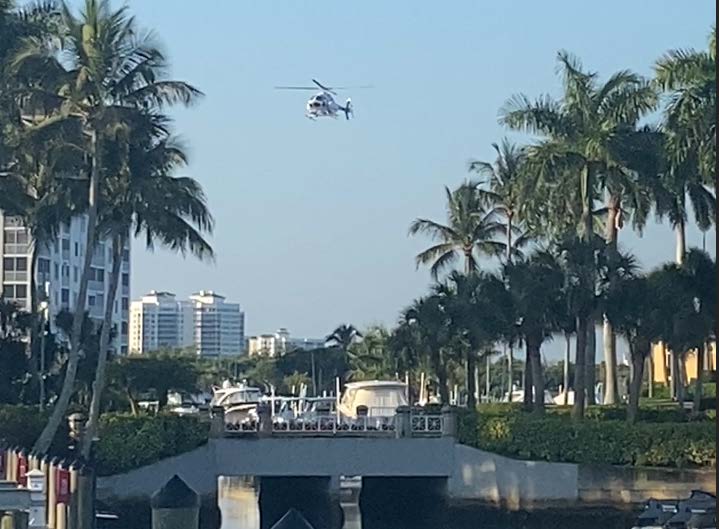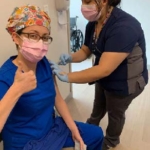The Aerial Choreography of Mosquito Treatments

by By Patrick Linn, MS, MSHAPI Executive Director, Collier Mosquito Control District
Did you know Spring’s high tides signal the beginning of Southwest Florida’s salt marsh mosquito season? These aggressive biters – Aedes taeneorhynchus – can travel on the winds some 40 miles in search of their blood meals, making them one of the most troublesome mosquitoes in our area. The prolific numbers of these insects emanating from their coastal mangrove habitat can potentially affect our quality of life, our health, and in turn, our county’s economy.
That’s why Spring also heralds an important step in the Collier Mosquito Control District’s integrated mosquito management program: our focus on controlling mosquito larvae in the water, thus reducing the number of adult, flying mosquitoes.
The District begins aerial “pre-treatment” operations via helicopters to dispense bacterial, pebble-sized material (harmless to all creatures save for mosquito larvae) over coastal habitat known to produce large quantities of these salt marsh mosquitoes. Inevitably, the novel – and oft perceived as night aerobatics – activities of our ships prompt phone calls of concern, particularly from newly relocated residents and those extending their seasonal stay who have not before witnessed this operation.
 The amount of expertise employed to successfully dispense the material from helicopters is extraordinary. The maintenance, planning, professional flight skills and more that go into these
The amount of expertise employed to successfully dispense the material from helicopters is extraordinary. The maintenance, planning, professional flight skills and more that go into these
missions are second-to-none. Our pilots (myself included) have been executing these low-flying missions for decades. There are multiple locations in Collier which require almost “surgical”
aviator skills given the proximity of residential buildings to habitat. Certainly, complex missions such as these are not for the faint-of-heart.
The visual drama associated with these missions is best thought of as a well-choreographed, team-executed mission. Our pilots fly the way they do so as to leave themselves an “out” – that is
to say, in the event of engine failure, we seek to always have an (unoccupied) location to land. The ability to treat some of the most productive habitat requires aircraft. Threats from snakes, alligators, spiders and more make traversing swamps at ground/sea level a fool’s errand. Finding employees to tackle such a task would be nearly as difficult.
Quite simply, the desire by the public to live near the water, mangroves, preserves, and parks, puts them at much greater risk of mosquito-borne diseases. The only reason we do not have malaria,
locally transmitted dengue, various forms of encephalitis, and other life-threatening mosquito-vectored diseases is due to mosquito control efforts by our team of professionals. Without wanting to be perceived as such, we are all that stands between our residents (and visitors) and devastating mosquito-borne diseases.
Further, please be sure to visit our website www.cmcd.org to sign up for notifications related to our missions. There you also can learn more about the District’s efforts underway to better the health or our community, the products we use, and our employees.




Leave a Reply
Want to join the discussion?Feel free to contribute!